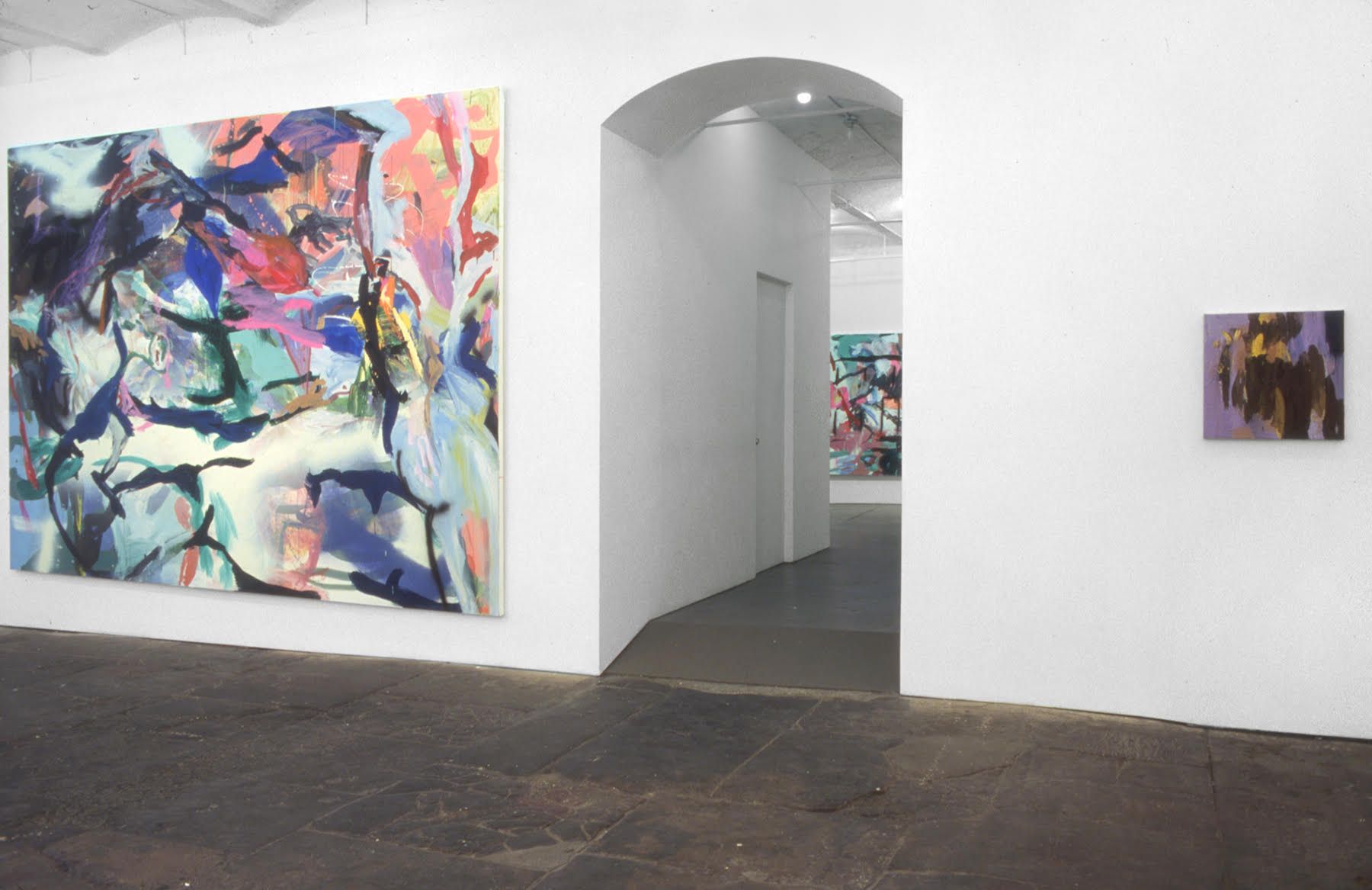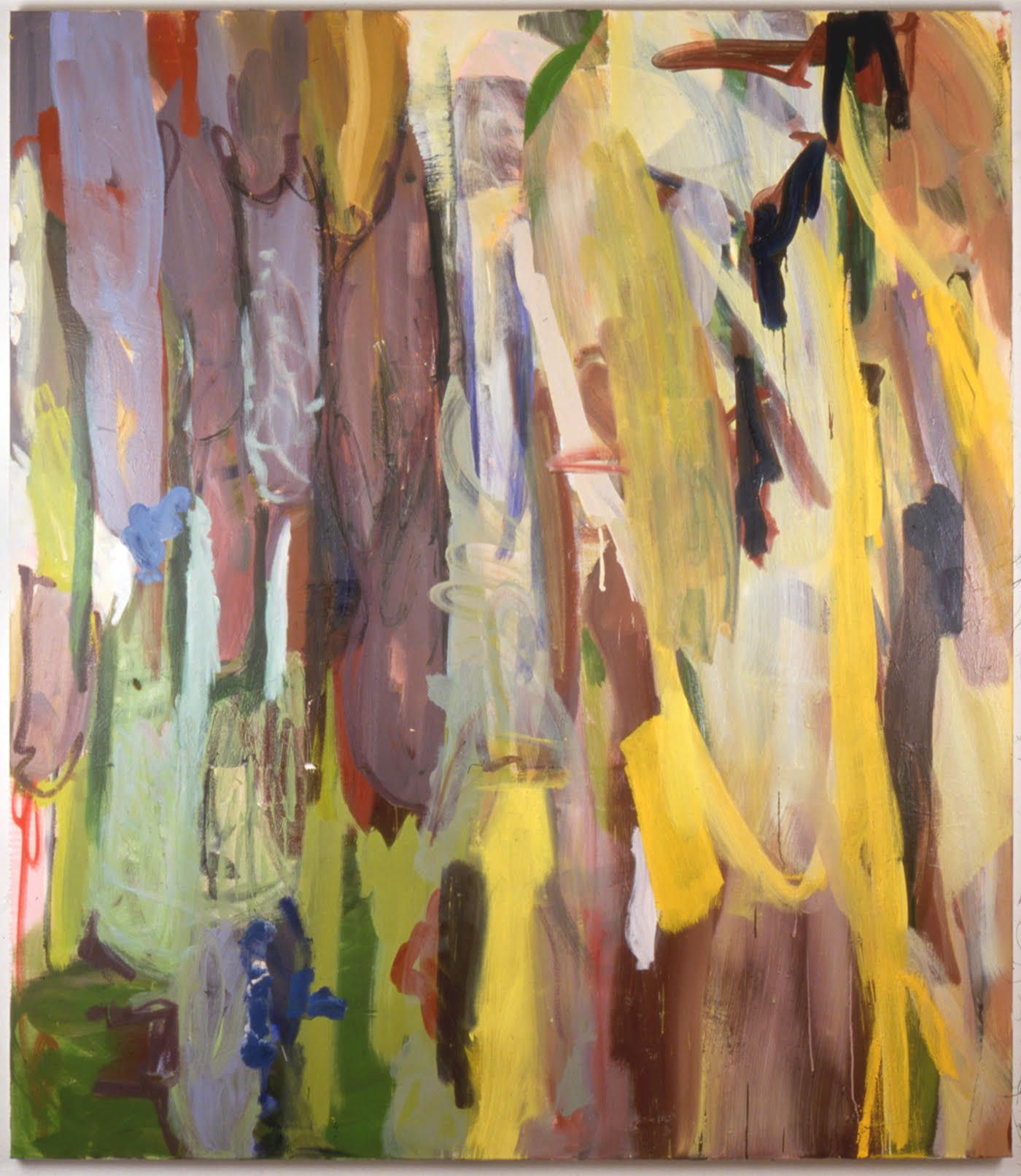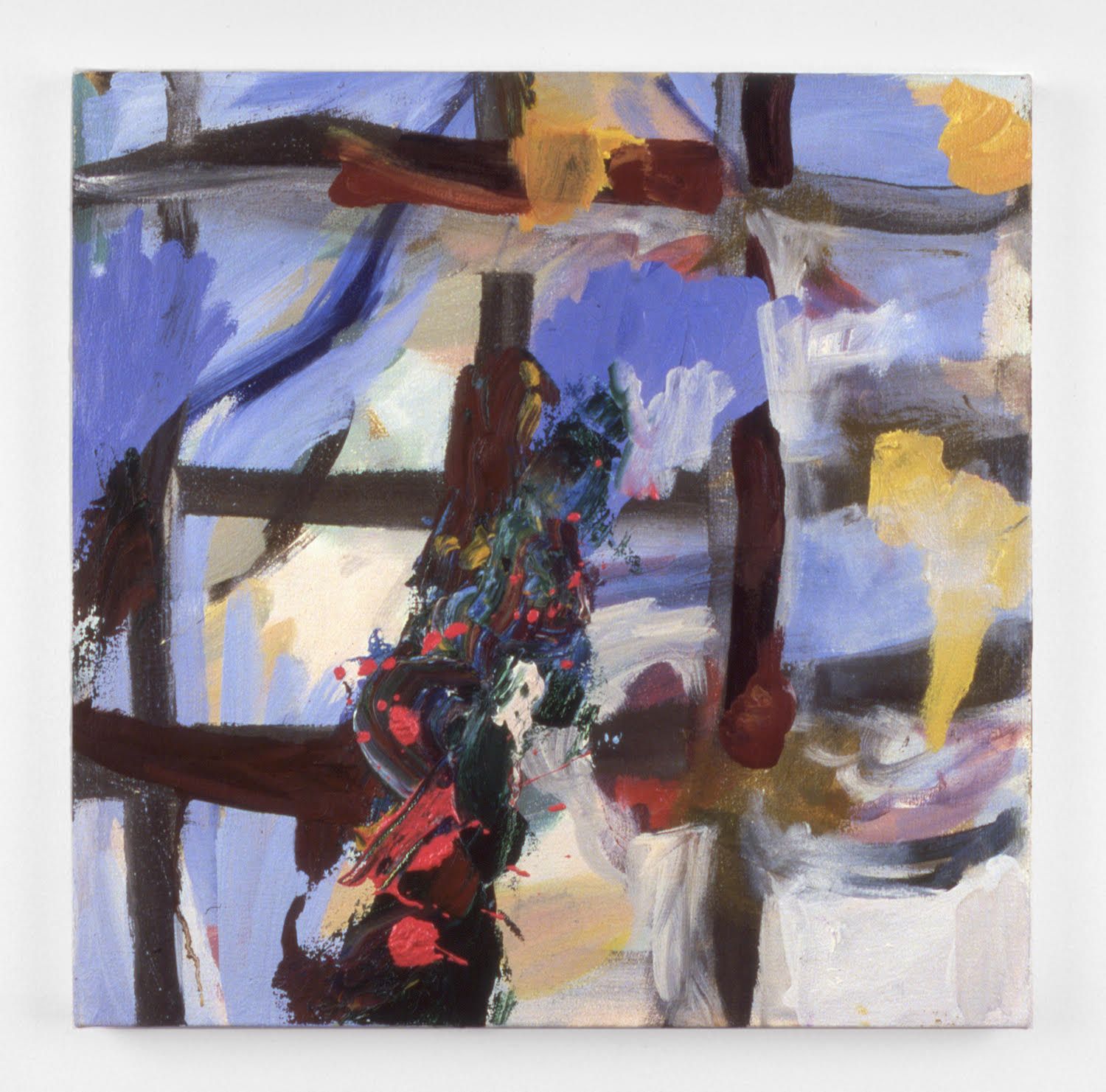Wallace Whitney
Formages, Sep 13 – Oct 19, 2003
Past: 55 Chrystie St
Installation view, Formages, Canada, New York, 2003

Installation view, Formages, Canada, New York, 2003

Installation view, Formages, Canada, New York, 2003

Installation view, Formages, Canada, New York, 2003

Artworks

Wallace Whitney,
Bambu,
2003,
80 × 60 in (203.2 × 152.4 cm)
Oil on canvas

Wallace Whitney,
Appendix,
2003,
108 × 144 in (274.32 × 365.76 cm)
Oil and acrylic on canvas

Wallace Whitney,
My Flute,
2003,
72 × 96 in (182.88 × 243.84 cm)
Oil on canvas

Wallace Whitney,
Ten,
2003,
20 × 20 in (50.8 × 50.8 cm)
Tape and oil on wood
Press Release
There is a rare certainty for painting and abstraction in Wallace Whitney’s work. He has chosen painting and its allusions, its history, its shortcomings and strengths, as his place to experience the abjection that the sick children of modernism have assigned themselves.
Whitney has taken an explicit route to exposure, weakness, degradation, and grace. The result is a remarkably revealing series of paintings that demonstrate a virtuosity and an irreverent disregard for that virtuosity. It is not contempt, but an acknowledgment that the tools of virtuosity are useless, a sham, a facade, arid and false, all in the service of valor, honor and nobility, and in total contradiction to love or to bravery, which is courage inspired by love.
Whitney’s paintings are rich in subject and content. The paintings verge on caricatures of Freudian psychoanalysis from various entendres and puns (Freudian slips) in titles to nearly textbook Freudian imagery. The show’s largest work, Appendix, which alludes to both a specific part of a text and the vestigial organ, demonstrates this preoccupation explicitly.
Appendix which reveals itself to be at once a circle or cycle, and perhaps a brooding figure in classic modern “yes/no” space, diagrams origin as a keystone in Freudian analysis. Mr. Whitney suffered a hernia last year that resulted from a childhood burst appendix, it is the old wounds which never heal. The textual appendix is a place where meaning or the subject is, as in psychoanalysis, elaborated. The vestigial organ, the appendix or the tonsils is forever involved in a question of meaning bound to history. Are these organs necessary, useful, obsolete, i.e. “what is their meaning” and whether they are benefit or a detriment is determined by current clinical trends. Two instances of such clinical chic are the secularization of circumcision, or in the case of Freud the clinical fad that the clitoris was simply a vestigial penis. Appendix , namely Whitney’s appendix, and his examination of it as metaphor, becomes his clitoris. Whit’s clit.
However, most glaring is the show’s title Formages, which is nearly always read as “fromage” (cheese), a more elaborate pun when combined with Whitney’s full name, Wallace French Whitney. There is, among other things, an evolution and synthesis in painting for Mr. Whitney which combines American landscape (Ryder, Blakelock, Hartley) and Anglo Yankee New England morality with flamboyant Frenchness. This is best demonstrated in HOUSE. An iconic painting of a classic New England colonial house, amidst a colorful freakout of French Rococo proportions, and still it seems to be a fall landscape in Massachusetts, exploding foliage that runs hot pink from red and purple from browns.
There is also a magnificent painting of a feminized flute, as well as a number of paintings that make a landscape, or intersection or tension of colored bones or colored sinew, that refer to a prepubescent/pubescent oblivion's bliss as well as that oblivion’s ambiguous turbulence. Whitney’s palate and imagery is developed with remarkable attention throughout this series of paintings. Whitney has declared his content and intention in a beautiful, slow and articulate way.
-Aaron Brewer